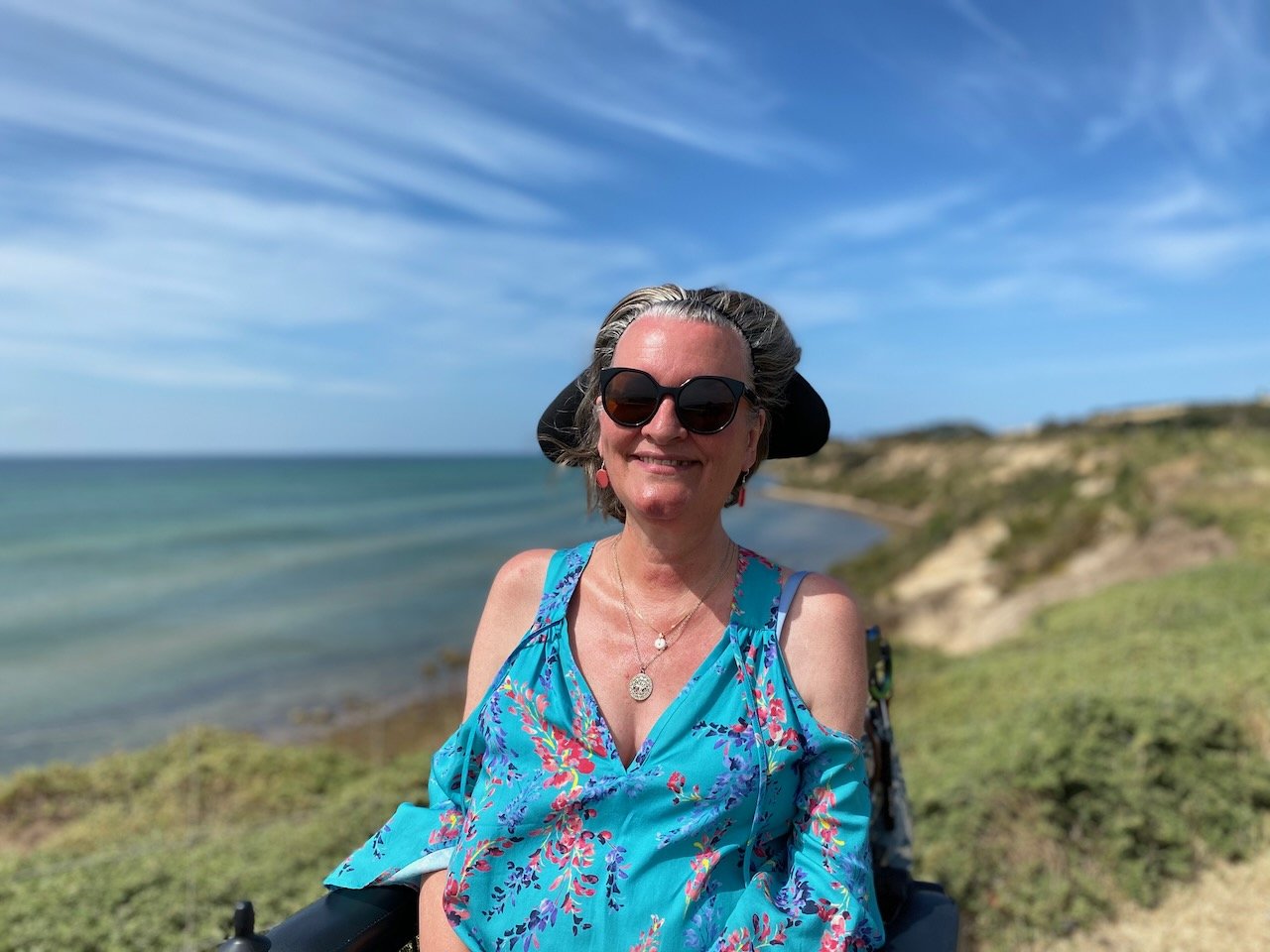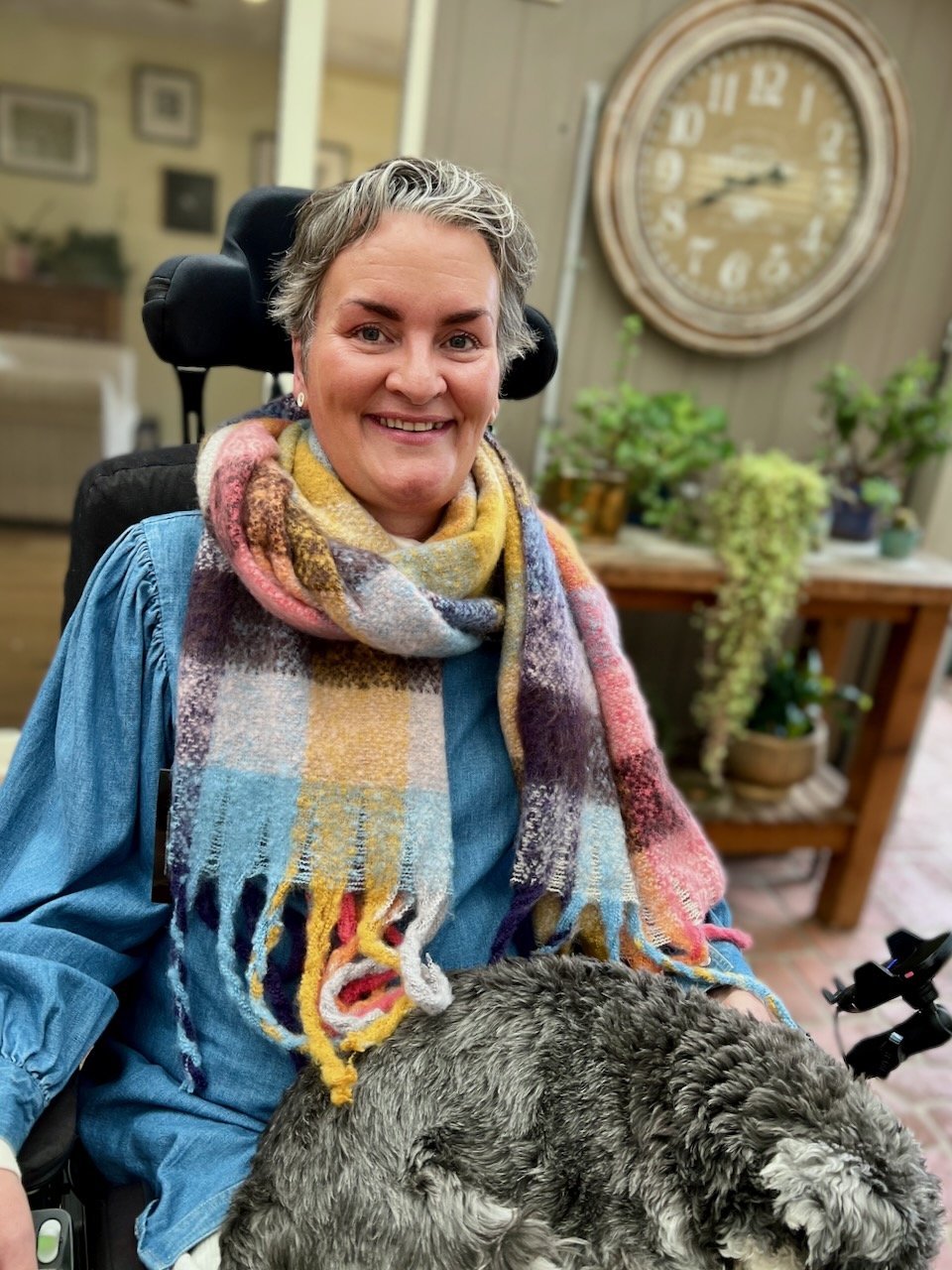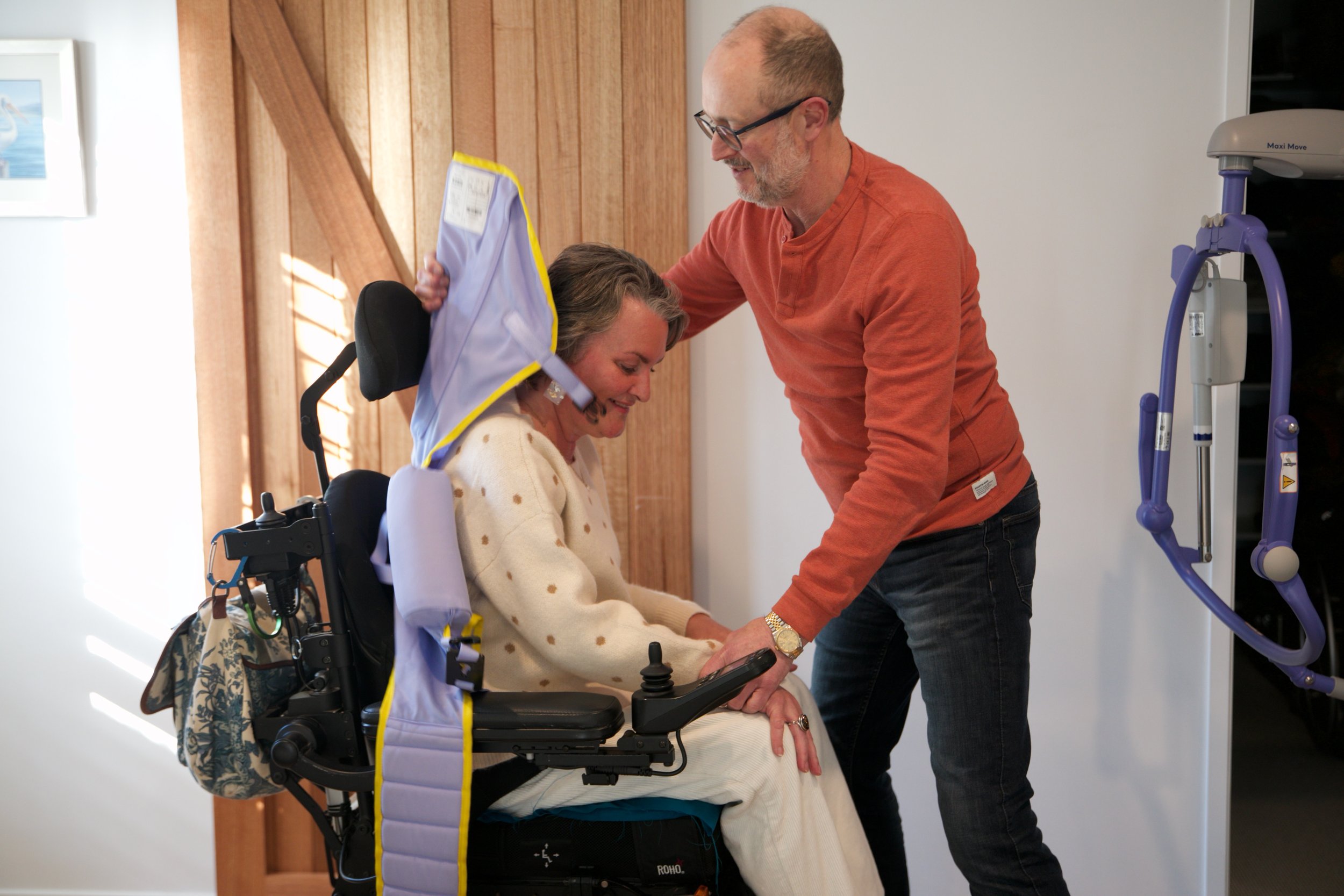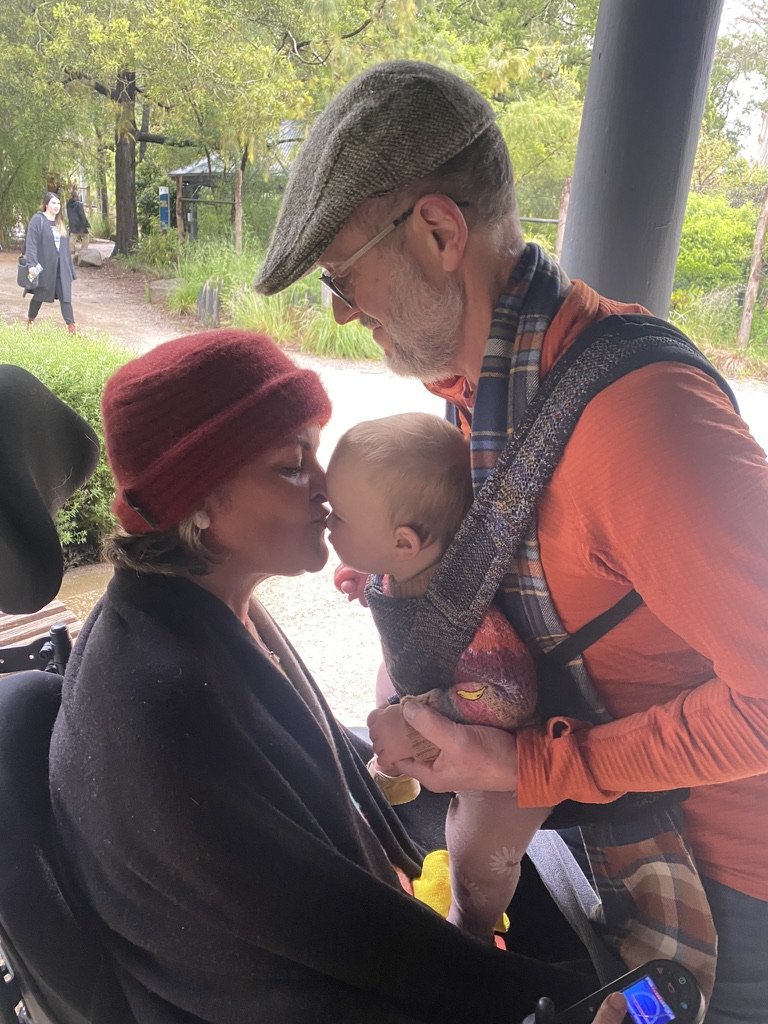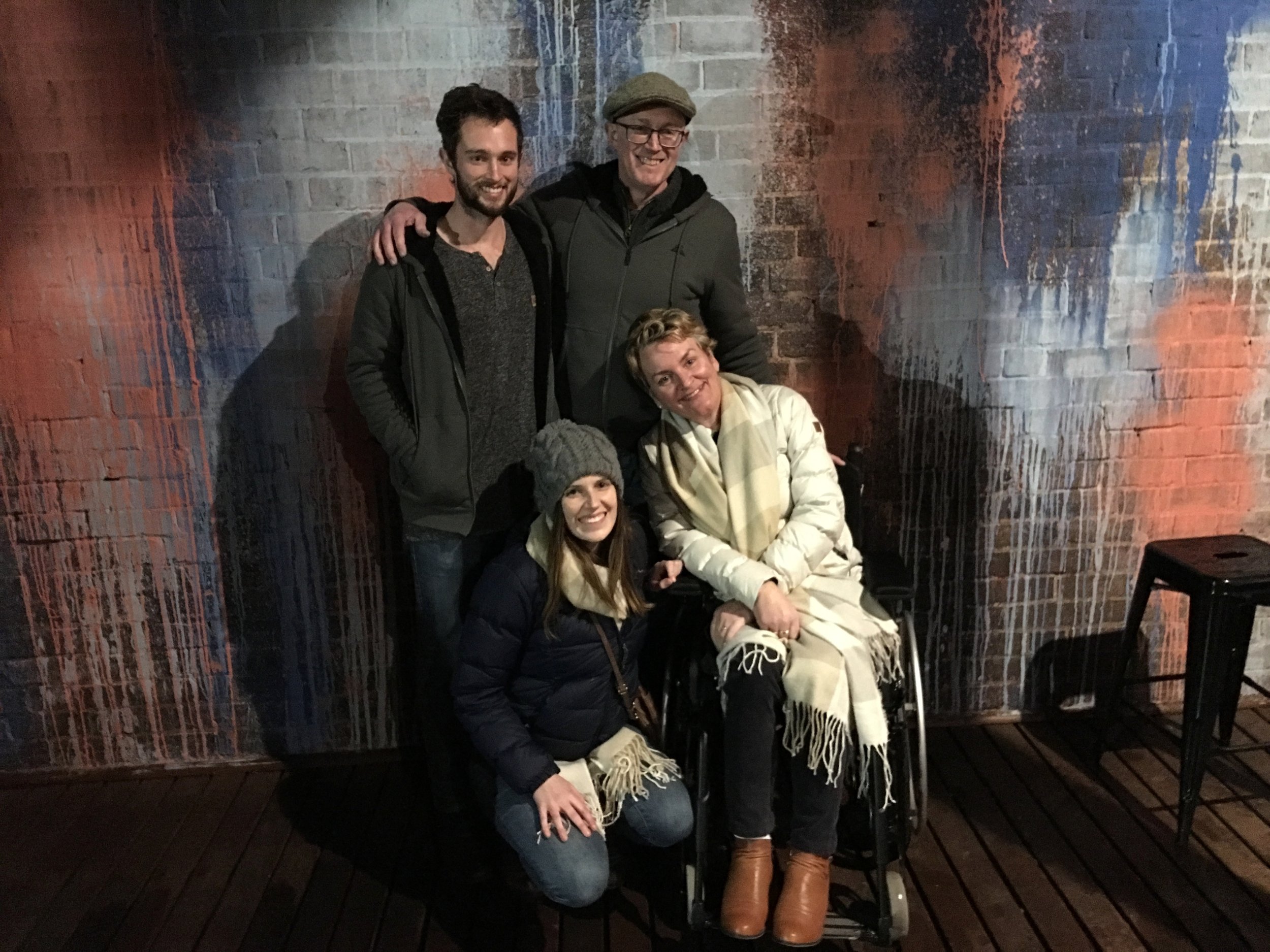MY STORY
C’mon, everyone, let’s get inclusive
First Chapter
Inclusion Without A Thought
Our lives are made up of many stages informed by experiences and choices. Some of which are fated, and others we have some degree of control over.
I have a privileged life, the first 40 years unfettered by the impact, or to my shame, much thought of the vast societal and individual impact of disability.
I set up my fantastic ordinary life long, long ago, with a man I cherish more each year. Together we gave life to three much loved humans. As a tight family unit, we made many memories from varied experiences, and I generally took for granted our health and abilities.
Activities such as getting a splinter out of a chubby little finger, jumping in the car four times while baking to replace an ingredient I kept burning ( I don't recommend melting dark chocolate in a Teflon pan ), single-handedly preparing for relocations, packing up our houses and seeking new housing, holidaying, and more. All with no limitations.
I pursued courses and hobbies and socialised and entertained.
All without sacrifice, compromise, prejudice, discrimination or misunderstanding.
Without really understanding just how many barriers our modern-day affluent society imposes on those with a disability, and the many other sub-communities that are unfairly marginalised based on such things as culture, indigeneity, gender, colour, age and more.
The Diagnosis
You won’t die from LGMD but you’ll die with it.
It’s 2007, and my GP is explaining the possible prognosis of a Muscular Dystrophy based on unusually high creatine kinase (CK) enzyme found in a recent blood reading. I’m listening without comprehension – what exactly is Muscular Dystrophy apart from an unattractive sounding name with too many syllables? This surely isn’t something connected to me.
Two days later, my foray into the elaborate world of medical specialists, scans, procedures and equipment scripting and trialling that will engulf my life, begins in earnest. After a muscle biopsy, my neurologist confirms Limb Girdle Muscular Dystrophy (LGMD). She also explains that no two people will take the same LGMD journey in terms of the exact cause, progression rate, the severity of affected muscles and associated comorbidities that may present.
I’m an active mother of three teenagers, I work part-time, support my corporate husband, Gary, pursue various hobbies, and enjoy a lively social life.
I can’t fit a debilitating neuromuscular disease into my life. And I really don’t want to. Of course, there is nothing any more special about me than the rest of us so why shouldn’t LGMD (and severe disability) visit me.
So, with a prognosis of LGMD that is ambiguous at best, and terminal at its worst, my options as I see them are to self-educate, gather supports, and adjust.
Second Chapter
Life With Disability – the LGMD type
I’m now nearly 20 years into life as a woman with a disability. As the symptoms of LGMD advance, we adjust, compromise, sacrifice and fight hard to make living with an increasingly profound disability work. Including Gary adding informal carer to his personal resumé.
LGMD is a relentless, thieving overlord, and my patience, spirit and humour are waning - but not yet lost. I now no longer walk, independently shower and toilet, transfer from seat to seat, turn in bed, raise my arms, turn my head effectively and perform the many actions associated with those movements.
I will never thank LGMD for the emotional and physical pain and limitations it has wrought. But I am grateful that these struggles have forced me to be part of a community of impressive, tough, empathetic, resourceful, and intelligent individuals that are stakeholders of one of the largest marginalised groups. The 21.4% of our society that is the disability community, and the growing cohort of disability ally’s; individuals, businesses, not for profits, medical and allied health areas .
I am exercising my choice over how I live with my diagnosis of Limb Girdle Muscular Dystrophy. I choose to use my skills and opportunities to reach into our wonderful community. To normalise disability and increase awareness of LGMD, by sharing resources and stories through writing, reviewing venues for accessibility, posting in social media, and hosting my radio program on 94.7 The Pulse FM, Geelong called Rolling Through Wednesday.
Happy inclusive living and playing,
